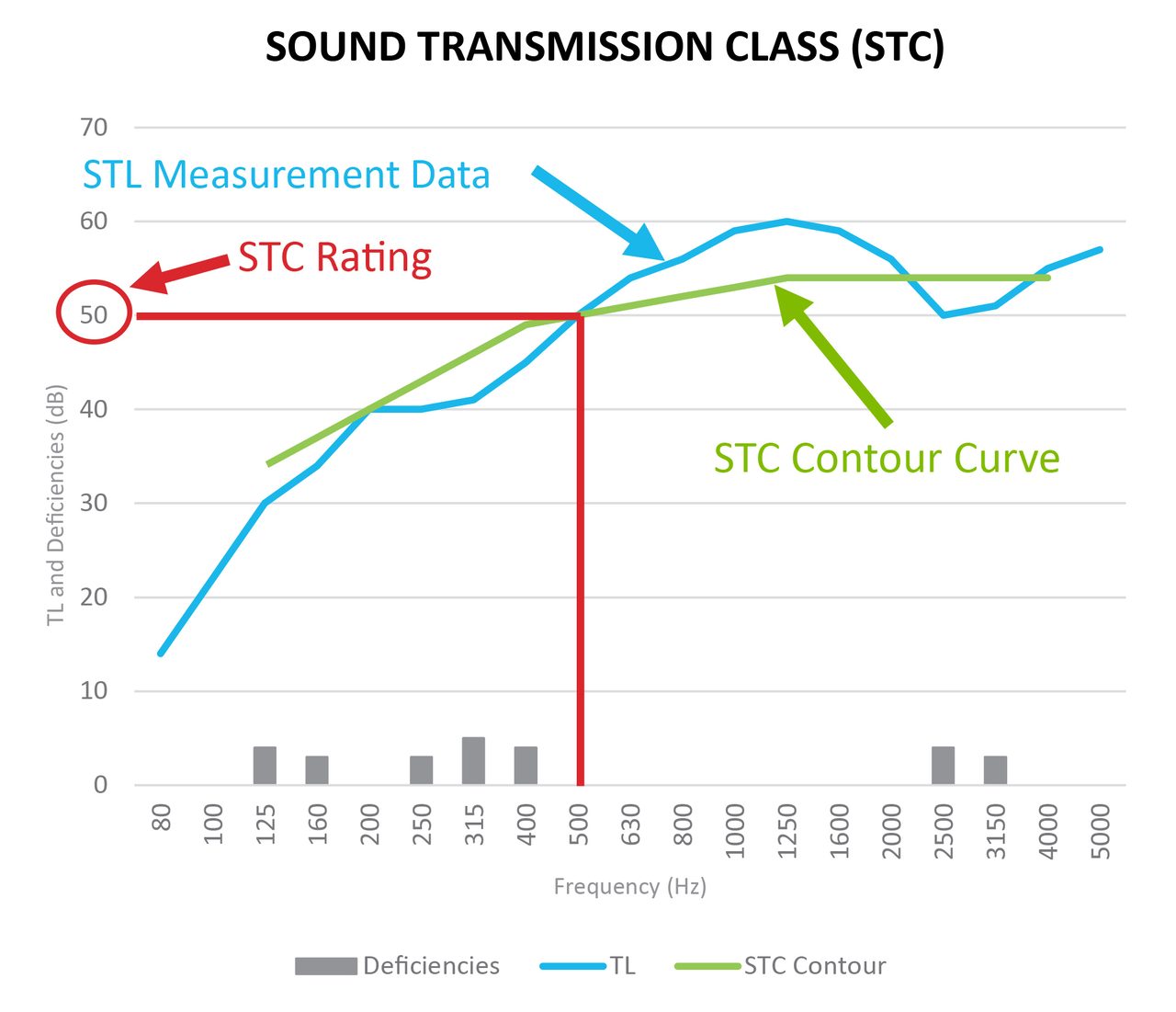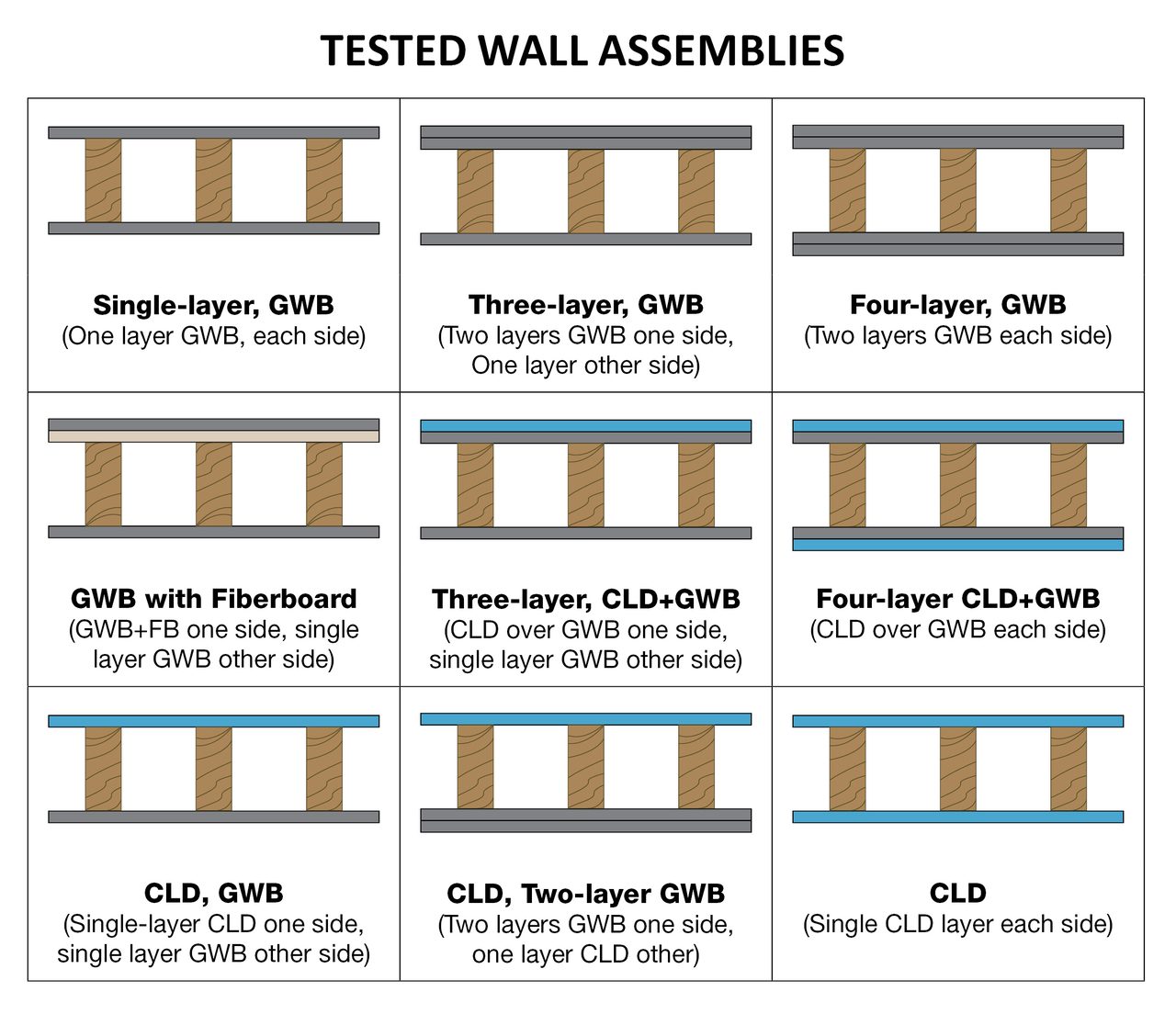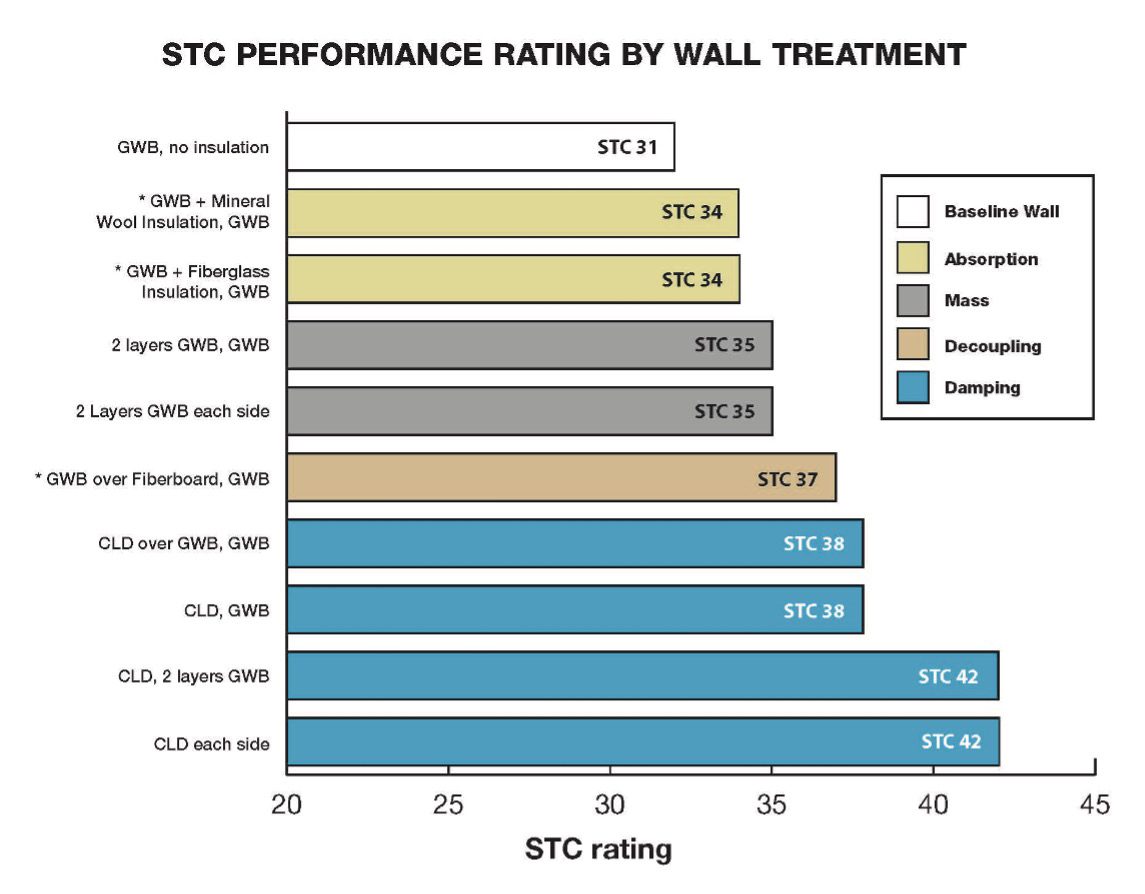A Good Study
New study reveals key insights about residential sound isolation.
By Benjamin Shafer
The importance of sound control in single family residences is changing. Homes are increasingly serving as offices, exercise rooms and theaters resulting in a greater need for quiet spaces and privacy. This has resulted in an increased need for sound isolation in the home.
There are several ways to improve sound isolation in the home including mass, absorption, decoupling and damping. Little if any sound isolation testing has been done to evaluate how these various sound control options perform. PABCO Gypsum executed an extensive research study to quantify this information for the benefit of residential building construction professionals.
Improving Sound Isolation in Homes
Sound control treatments commonly used in homes are categorized into four general types: mass, absorption, decoupling and damping:
- Mass: Adding gypsum layers increases the overall mass of the partition
- Absorption: Adding insulation to the wall cavity such as fiberglass or stone wool insulation
- Decoupling: Acoustically isolating the gypsum wallboard from the building structure by adding fiberboard as an intermediary layer, the most common treatment for homes
- Damping: Minimizing sound vibration through the wall using constrained layer damped (CLD) gypsum panels, multilayer composite panels comprised of gypsum wallboard and viscoelastic polymers
Fundamentals of Building Sound Isolation
Sound Transmission Loss (STL) is currently the most widely known and in-depth measurement of sound isolation in buildings throughout North America. The STL is measured in a laboratory by creating sound with loudspeakers in one room (source room) measuring this noise with microphones, and then measuring the sound transmitted through a partition sample in an adjoining room (receiving room) also with microphones.
The measured receiving room sound levels are essentially subtracted from the measured source room sound levels. The resulting decibel (dB) STL values are then provided in 1/3 octave band frequencies from 125 Hz to 4,000 Hz. These STL values can be used to calculate the single-number STC (Sound Transmission Class) rating using a contour curve-fit method. (See Figure 1)

Figure 1: Calculation of sound transmission class (STC) from sound transmission loss (STL) data. The measurement frequencies in Hertz in 1/3-octave bands are shown on the horizontal axis, and the STL values in decibels are shown on the vertical axis.
Test Methodology
STL testing was completed in accordance with the ASTM E90-09 Standard Test Method for Laboratory Measurement of Airborne Sound Transmission Loss of Building Partitions and Elements. It was conducted at a third-party accredited laboratory, North Orbit Acoustical Laboratory located in Dyersville, Iowa, in May 2020.
All tests were conducted on 3 1/2” 2x4 single wood framing with studs spaced 16” on center, wood framing commonly used in the construction of single-family homes.
Nine different wall assembly configurations were tested in the laboratory (See Figure 2). All wallboard used in the study including the constrained layer damped board was ½” Regular, the drywall commonly used in single family housing. In addition, three cavity types were installed in each assembly: no insulation, 3½ inch R-13 fiberglass insulation and 3-inch stone wool unfaced insulation.

Figure 2: Illustrates the nine wall assemblies used for this study. GWB=Gypsum Wallboard, FB=Fiberboard, CLD=Constrained Layer Damped panel.
Test Results
- Mass: Adding a second and third layer of wallboard onto the base assembly (one layer of gypsum wallboard (GWB) on both sides) provided a 4-STC point increase in performance and between a 3-8 dB increase in STL over the frequency range reported by the laboratory.
- Absorption: Adding fiberglass or stone wool insulation to the wall cavity resulted in a 3-STC point increase slightly less than the addition of mass. The effect of the insulation was different across the measured frequencies—little to no improvement in STL at low frequency, a large improvement in the lower mid-frequency range of 10 dB and then a steady 5 dB improvement throughout the higher frequencies measured. No statistically significant difference was found between the fiberglass and stone wool insulation types.
- Decoupling: Installing the GWB over a decoupling fiberboard panel increased the STC rating by 6 points. The STL performed consistently 5 dB better than the baseline GWB until 1,000 Hz, at which point the STL difference gradually increased to 15 dB at the high-frequency range.
- Damping: Two different configurations of damping were tested—retrofit (where the constrained layer damped (CLD) panel was installed over the existing GWB) and direct-attached as would be the case for new construction. The retrofit damped configurations resulted in a 7-12 STC point increase vs. the baseline GWB performance. The STL difference varied with the largest improvement in the high frequency range, upwards of 25+ dB difference. The direct-attached CLD configurations resulted in a similar increase in both STC and dB STL difference from the baseline assembly.

Figure 3: STC rating of mass, absorption, decoupling, and damping as compared to the single layer gypsum wallboard assembly with no insulation. The test configurations are shown on the vertical axis and the STC values are shown on the horizontal axis. All wallboard used in the study was ½” thick and all assemblies are without insulation unless indicated.
Conclusion
The STC rating compared to the baseline GWB partition without insulation and every other treatment—mass, absorption, decoupling and damping—is shown in Figure 3. The most marked improvements in performance occurred when the damped panels were added to the assembly. Adding fiberglass or stone wool insulation or additional panels provided only nominal improvements in sound isolation performance. The decoupling treatment provided slightly better performance than the mass and absorption, but less than the damping treatments.
Note: The test report numbers used in the study included: NOAL 20-0501, 20-0506, 20-0514, 20-0502, 20-0503, 20-0531, 20-0509, 20-0510, 20-0520, 20-0521, and 20-0522.
Images courtesy of xxxxxxx.
Benjamin Shafer is technical services manager, acoustic systems for PABCO Gypsum, where he coordinates building sound isolation design with acoustical consultants, architects and building professionals. He conducts product research and development and has authored and edited several technical documents and industry guidebooks. He is an active member of several technical organizations, including the Acoustical Society of America, Institute of Noise Control Engineering, ASTM, and more. He is also the author of multiple papers on various topics in acoustics.
